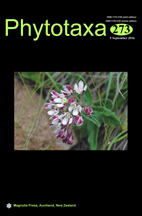Abstract
A new Seifertia species was isolated from hanging rachides of Rhododendron decorum in Yunnan Province, Southwest China. The new taxon was compared with the type species, S. azalea and differs in having wider conidiophores, with hyaline to subhyaline and smaller conidia, while S. azalea has olive-brown to brown, rarely branched conidiophores, and pale brown or olive-brown, very rarely septate conidia. Phylogenetic analyses of combined LSU, SSU and TEF1-α sequence data show that S. shangrilaensis forms a robust clade with S. azalea nested among the species of Melanommataceae in the order Pleosporales. A new species, S. shangrilaensis is introduced in this study, and Seifertia should be placed in Melanommataceae (Pleosporales, Dothideomycetes) based on phylogenetic analysis. Description and illustration of Seifertia shangrilaensis are provided with notes and its introduction is supported by molecular data.

